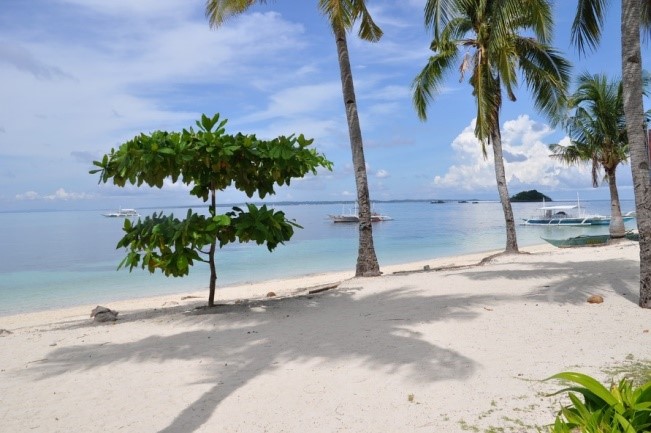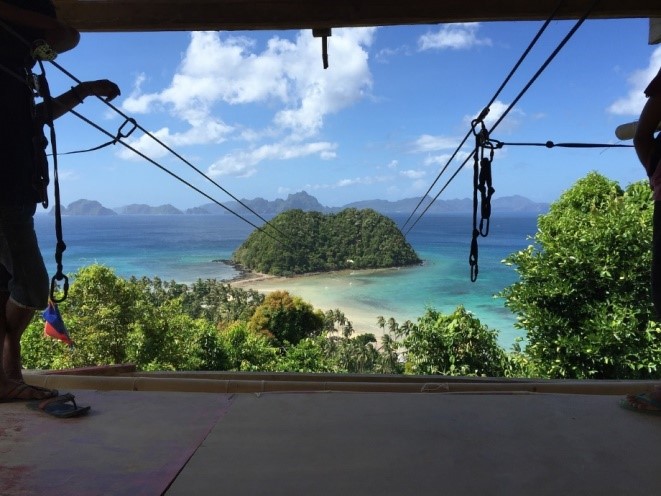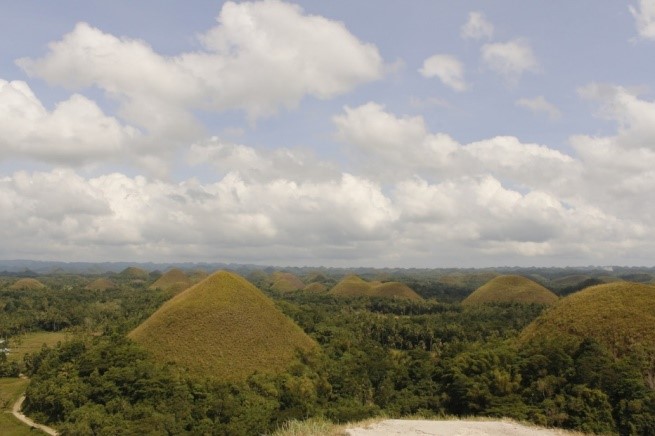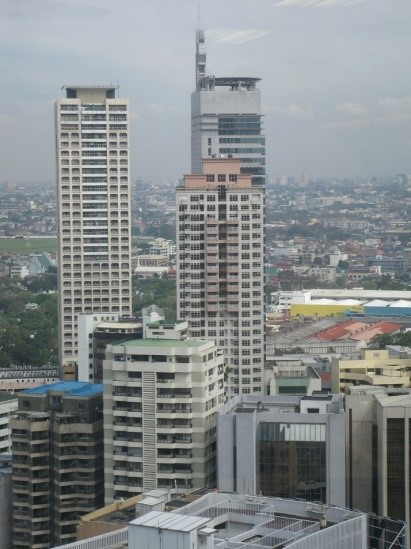The Philippines has some of the friendliest people in the world and for an expat it’s a welcoming and fascinating place to be. It’s a country with everything from fantastic sandy beaches to mountains and rainforests. In this blog, we’ve chosen five must-do things for expats living and working in the Philippines.
Feel the volcanic heat!

The Philippines has hundreds of volcanoes and there’s plenty of opportunity to get up close and personal, from getting a bird’s eye view is a private plane to a trekking up through lava rock trails.
The second smallest island in the Philippines, Camiguin, is just 23 kilometres in length and 14 kilometres wide but has seven volcanoes. The Island was formed by earthquakes and volcanic eruptions. Mount Vulcan erupted in the late 1800’s, submerging the old town of Catarman under the sea and leaving behind only the ruins of the church and its tower. Marked by a cross, the Sunken Cemetery was also part of the town.
Camiguin’s natural attractions just have to be seen. The Ardent Hot Spring, for example, has waters heated by the active volcano Mt Hibok-Hibok, and bubble away at a temperature of 40 degrees Celsius. In contrast the cool waterfalls of Katibawasan Falls or Tuawasan Falls are hidden amongst trees, ferns and boulders. The Santo Nino Cold Spring is great for a refreshing dip with waters at 20 degrees and where small fish will give you a unique massage!
If you like trekking, the Philippine’s volcanoes provide an invigorating challenge, rising up to 1,600 meters.
Go “Site” Seeing

The Philippines has five World Heritage listed sites - Tubbataha Reef National Marine Park, the Rice Terraces of the Philippine Cordilleras, the Historic Town of Vigan, the Subterranean River National Park and the Baroque Churches of the Philippines.
The Tubbataha Reef National Marine Park, South Sulu Sea, Palawan was recognised by UNESCO for its marine diversity, said to be the best in the world and, as one the most outstanding coral reefs in South East Asia. The atoll reef spans 33.2 hectares and is unique in the world. The name “Tubbataha” derives from two Samal words meaning “a long reef exposed only at low tide”. The reef is so isolated it can only be reached on a live board boat.
The Puerto Princesa National Park, Palawan is a natural wonder which is geologically unique with subterranean rivers that are said to be among the longest in the world, measuring 8.2 kilometres. This national park consists of various landforms from limestone plateaus to a rainforest and is home to a diverse range of endangered flora, fauna and animals including the mouse deer, wild pigs, and flying squirrels that only exist in Palawan.
The Rice Terraces of the Philippines Cordilleras offer an amazing and unique experience. High in the remote areas of the Philippine Cordillera mountain range, the slopes have been terraced and planted with rice - paddy fields that cover an area of 20,000 sq. kilometres. The site is found at altitudes from 700 to 1,500 metres above sea level and shows how man has shaped the landscape to grow rice.
The historic City of Vigan is the third most important city after Manila and Cebu and the centre of Spanish colonial power. The island is detached by three rivers and the town is an amazing example of Spanish colonial and Asian architecture. Vigan is the country’s only city that dates back to the 16th century.
The four churches of the Philippines are worth a visit and are all listed by UNESCO standing as monuments to the days of Spanish colonialism.
The Church of San Agustin in Paoay took over 100 years to build (1604-1710) and is designed to be earthquake proof. The bell tower stands away from the church to avoid it falling during earthquakes. The church’s phalanx of buttresses jut out perpendicularly from to strengthen the walls. It’s a large church with a fantastic design and well worth a visit.
Nuestra Senora dela Asuncion in Santa Maria, Ilocos Sur is located alone on the crown of freestanding hill encircled by a stone retaining wall which gives it a citadel appearance. A stairway of 85 steps leads from the town to a small courtyard. A second stairway descends to a causeway above rice fields leading to a cemetery. The church has a monumental façade and stands as a powerful architectural reminder of past times.
San Agustin Church in Intramuros, Manila is located in Intramuros a nerve centre of the country during the 350 years of Spanish rule. The interior has traces of original wall painting in Mexican style. The interior painting was completed in the late 19th century and this influenced the interior painting of many Philippine churches. The church has an unusual design and it’s said the structure is supported by a foundation that allows the building to sway in an earthquake.
Santo Tomas de Villanueva Church in Miag-ao, Iloilo is built of yellow orange sandstone. Completed in 1797, the church has withstood typhoons and earthquakes as well as two fires. It is one of the best examples of fortress baroque style and stands high up in the town. Santo Tomas de Villanueva church does have the appearance of a fortress with its two bell towers and angled buttresses. The building’s carvings over the outside façade are unique and were created by master carvers.
A chocolate indulgence!

Visit the island of Bohol to see the famous Chocolate Hills - grass-covered limestone domes that are nearly symmetrical in shape and height. There are said to be a minimum of 1,268 but possibly up to 1,776. The hills get their names as they turn brown during the dry season making them look like chocolates. How they were formed is unknown.
Hit the Town

Baguio was built by the Americans as a holiday town in the 1900’s. Today the town offers something for everyone.
Shop in an ukay-ukay (thrift shop) on Session Road, where you can find all things vintage - look out for branded items at bargain prices. The downtown market sells all sorts of carved bulul (rice gods) and the infamous Barrel Man. Woven rattan products such as pasiking (native backpacks) and baskets come in all varieties, all local crafts where you can also see the carvers in action.
For art lovers the Bencab Gallery and Museum is built on the edge of a hill with views of a rainforest. The museum is owned by the National artist, Ben Cabrera. The nearby Tam-Awan Villageis the place to visit to see Cordillera life where you’ll find replicas of native cogon-thatched homes, and get a chance to meet local artists.
